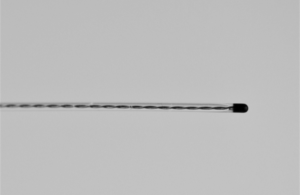
The catheters have been used in many applications. For example, echogenic catheter-over-needle systems can be used for continuous nerve block. Echogenic catheters have also been used for ultrasound-guided embryo transfer in in vitro fertilization programs.
In one study, echogenic catheters facilitated catheter identification under ultrasound in the duration of the embryo transfer procedure, according to a 2006 study. In another 2015 study, an echogenic catheter was used as a nerve block for a paravertebral anesthesia block. The results demonstrated superior ultrasound visibility of the entire length of the test catheter compared to a control.
Echogenic catheters are designed to maximize visibility. Some catheters feature a touhy needle that includes etched imprints on the needle tip that reflects ultrasound for brighter visualization. Catheter tips can be purposely directed to an exact location without needing to thread. Once the catheter is in the physician’s desired location, the needle can be removed easily.
There are several companies that make echogenic catheters, including B. Braun and EpiMed.

